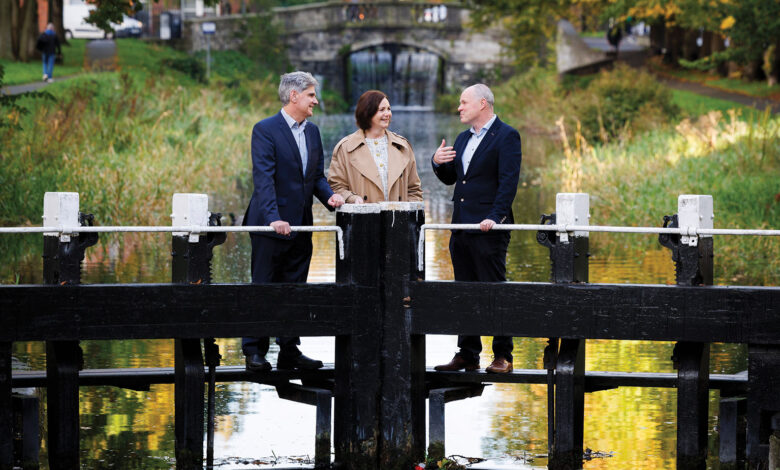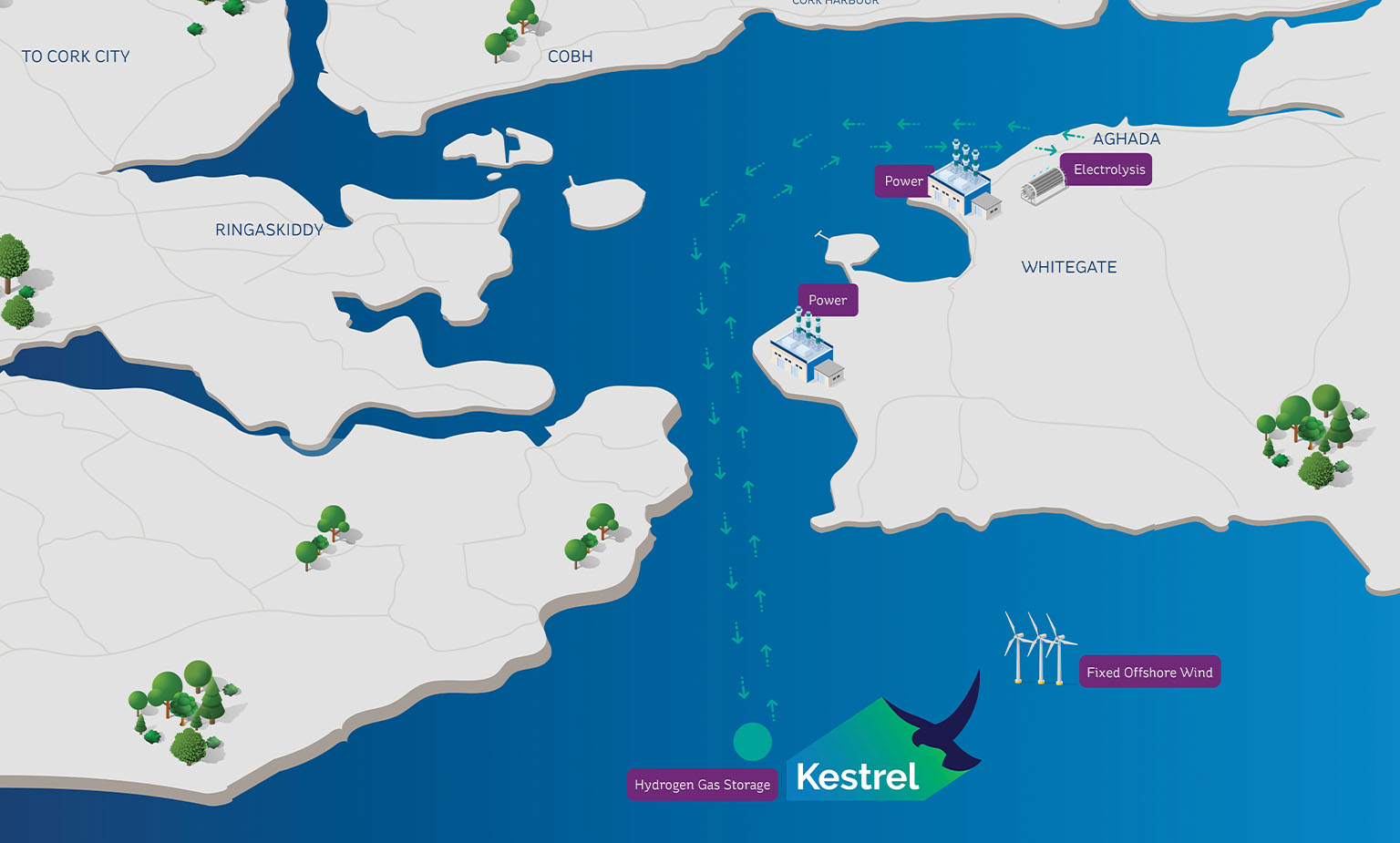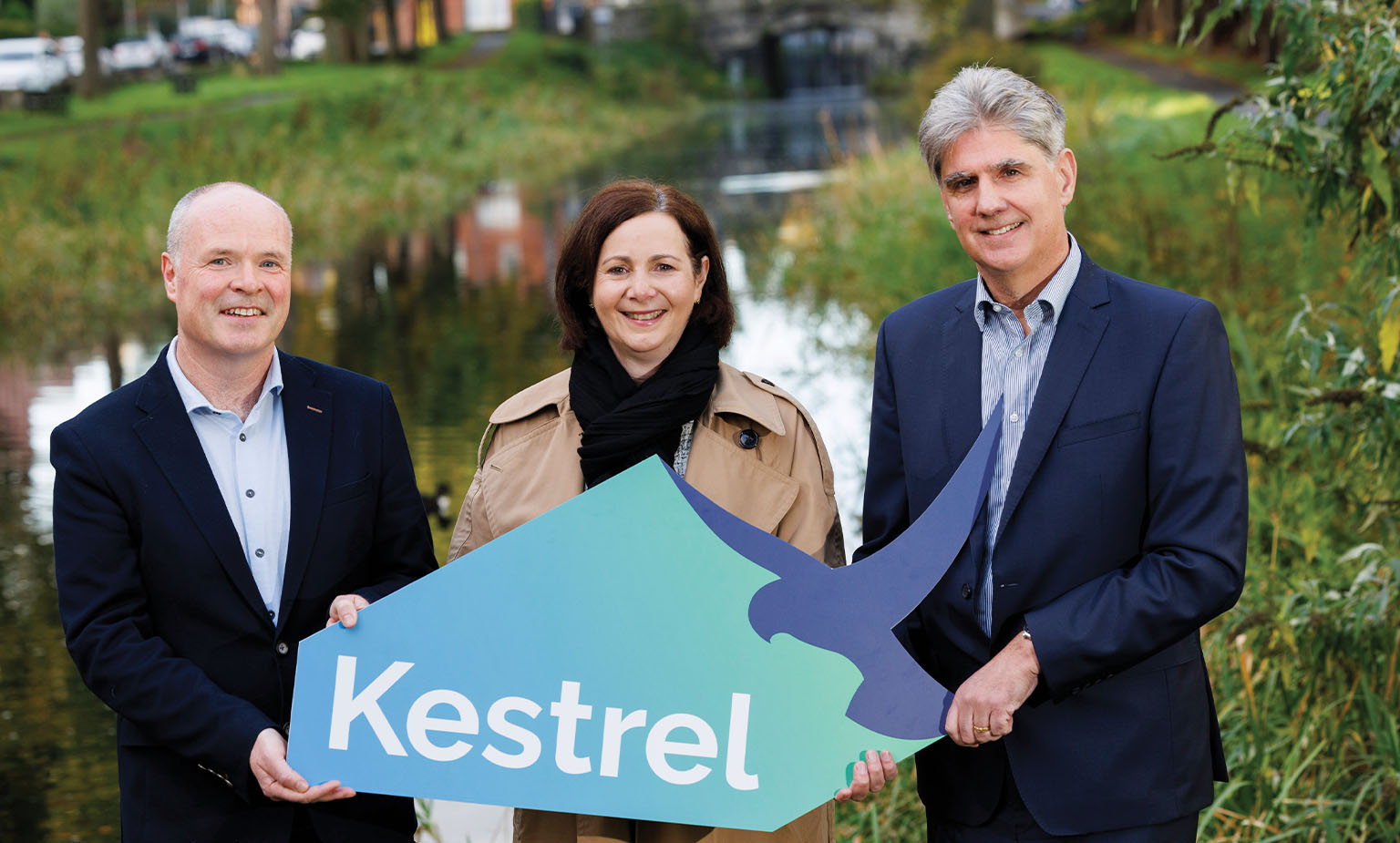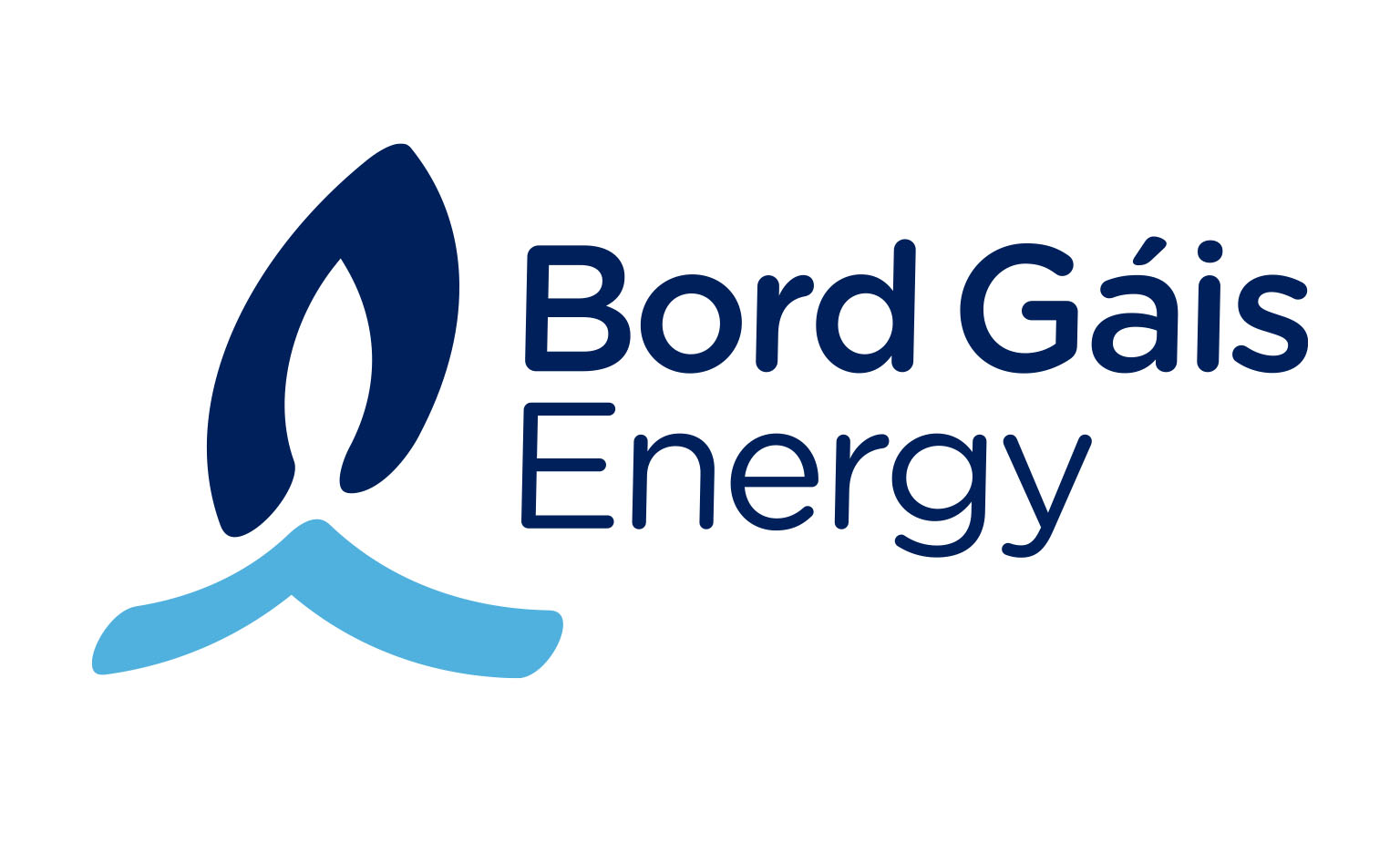Unlocking the potential of long-term energy storage The Kestrel Project, collectively developed by ESB, dCarbonX and Bord Gáis Energy

It is essential to transform Ireland’s energy system to achieve its goal of a climate-neutral economy by 2050 whilst also ensuring that the energy system is secure and reliable.
Of particular importance is the need to ensure that there is sufficient indigenous long-term infrastructure that can support Ireland’s current energy supply requirements, whilst also ensuring that this infrastructure can evolve to cater for the increased penetration of renewables, in particular biogas and green hydrogen.
In addressing this topic, we firmly believe that a key consideration is to ensure security of supply, as compared to a complementary diversity of supply. Specifically, on the basis that Ireland does not wish to outsource its security of supply, we believe that the development of local large-scale underground energy storage capacity – via underground gas storage (UGS) – is essential for Ireland’s energy security requirements given the current crises (Ukraine and the Middle East) together with the lack of indigenous gas production and/or storage in Ireland.
In addition, there is a need to start preparing essential large-scale underground molecular storage for the increased future planned roles of biogas and green hydrogen in Ireland’s energy mix, which also underpins the significant investment planned to be taken in renewable energy developments.
Background
Critically, the use of large-scale underground energy storage is not a new technology, having been established and utilised throughout most EU countries for the past 50 years as a security of supply and load balancing instrument. Importantly, it is also not new to Ireland as the SW Kinsale natural gas storage facility (2.3TWh) operated successfully from 2001 to 2016.
This storage facility provided natural gas storage, that amounted to circa 10 per cent of the then Irish electricity market, providing Ireland with a safe, reliable in-country storage facility, ensuring that peak shaving and network supportive gas resources were in place to avoid supply disruptions and importantly, provided risk mitigation from significant price fluctuations.
The rationale for underground gas storage
Underground gas storage is now designated as “critical infrastructure” across the EU. The main opportunity for the storage of energy in gaseous molecular form (including future biogas and hydrogen developments) in UGS is linked to its distinctive attributes such as scale, duration and cost when compared to other forms of electron storage such as battery technology.
To cope with peak periods, UGS facilities can be appropriately scaled, to address seasonal/annual storage needs required by the energy systems to address demand swings between e.g. summer/winter or across different years. This has the added benefit of protecting consumers from significant variations in gas prices.
Promoting future development of renewables via biogas and green hydrogen storage
Future plans to increase renewable energy penetration (primarily from wind, solar, and biogas) will create the need for further baseload energy to support the electricity system. This is acknowledged by the Government as it looks to expand the fleet of gas fired power stations, thereby removing more carbon intensive power generation capacity.
Wind Energy Ireland points out in its report Seizing our Green Hydrogen Opportunity that green hydrogen can be central to creating a clean, decarbonised Irish economy by providing long-term energy storage for the decarbonising electricity market for when the wind is not blowing, and the sun is not shining.
Generally, energy storage should be located proximate to the end user to minimise costs. However, as discussed above, Ireland’s future energy system will require large-scale green hydrogen storage, and due to geological, societal and planning considerations, the most appropriate location for such large-scale storage is offshore and underground. This provides societal, safety and consenting benefits as the storage infrastructure that is “clean, green and unseen”.


The Kestrel Project
Bord Gáis Energy is working together with dCarbonX (50 per cent owned by Snam SpA, Europe’s largest gas storage and distribution operator) and ESB on the Kestrel project offshore Cork. The group has spent the last number of years reworking 42 years of gas production data from the Kinsale Head gas fields. The study has initially involved assessing the potential to reinstate methane (natural gas and biogas) storage in the area but also the future storage of green hydrogen. The assessment has highlighted one reservoir which can deliver 11TWh of natural gas storage or circa 3TWh of hydrogen storage. As modelled, both storage scenarios including the phasing of gas to hydrogen can support Ireland’s current security of supply dilemma as well its future decarbonisation pathway.
As a relatively isolated island nation on the western fringe of Europe with limited indigenous natural gas resources and a growing energy appetite, Ireland’s people and economy are exposed to an energy supply shock. Large scale energy storage, as has existed here before can be the mitigation to this issue.
In addition, such large-scale energy storage is also required to catalyse other national energy initiatives such as offshore wind and biogas development if Ireland is to fulfil its zero carbon energy goals.
Dave Kirwan, Managing Director, Bord Gáis Energy agrees: “Decarbonising Ireland’s energy system while maintaining security of supply is critical in the context of our growing economy.
“As we help to deliver the green transition, there will be an ever-increasing role for gas and ultimately green hydrogen and we are delighted to partner with ESB and dCarbonX and deliver the infrastructure for a greener future.
“Together with the support of Centrica, we have the skills, vision and financial backing to help Ireland achieve its ambitious Climate Action Plan targets.”

For further information visit: www.h2kestrel.ie





